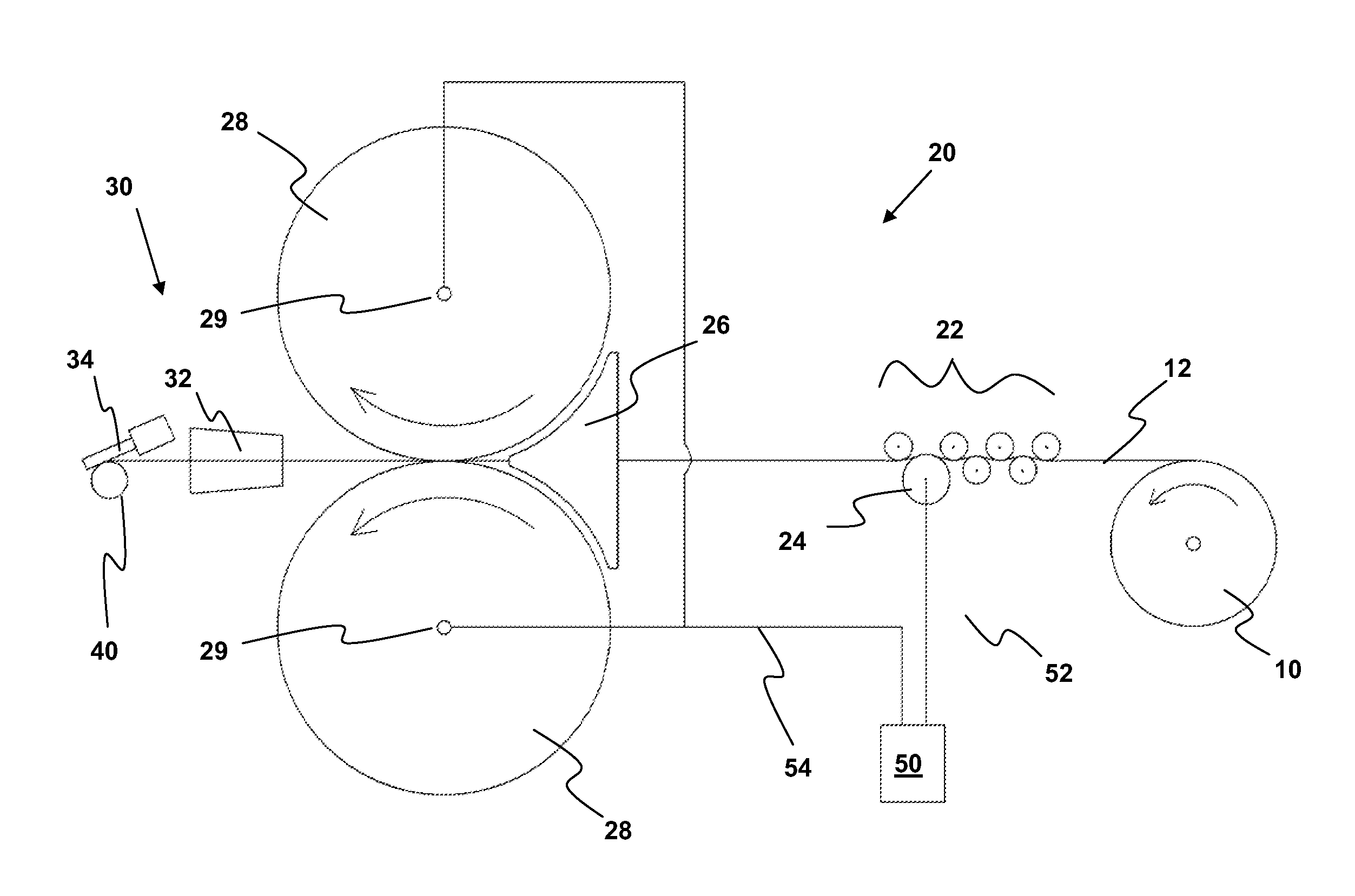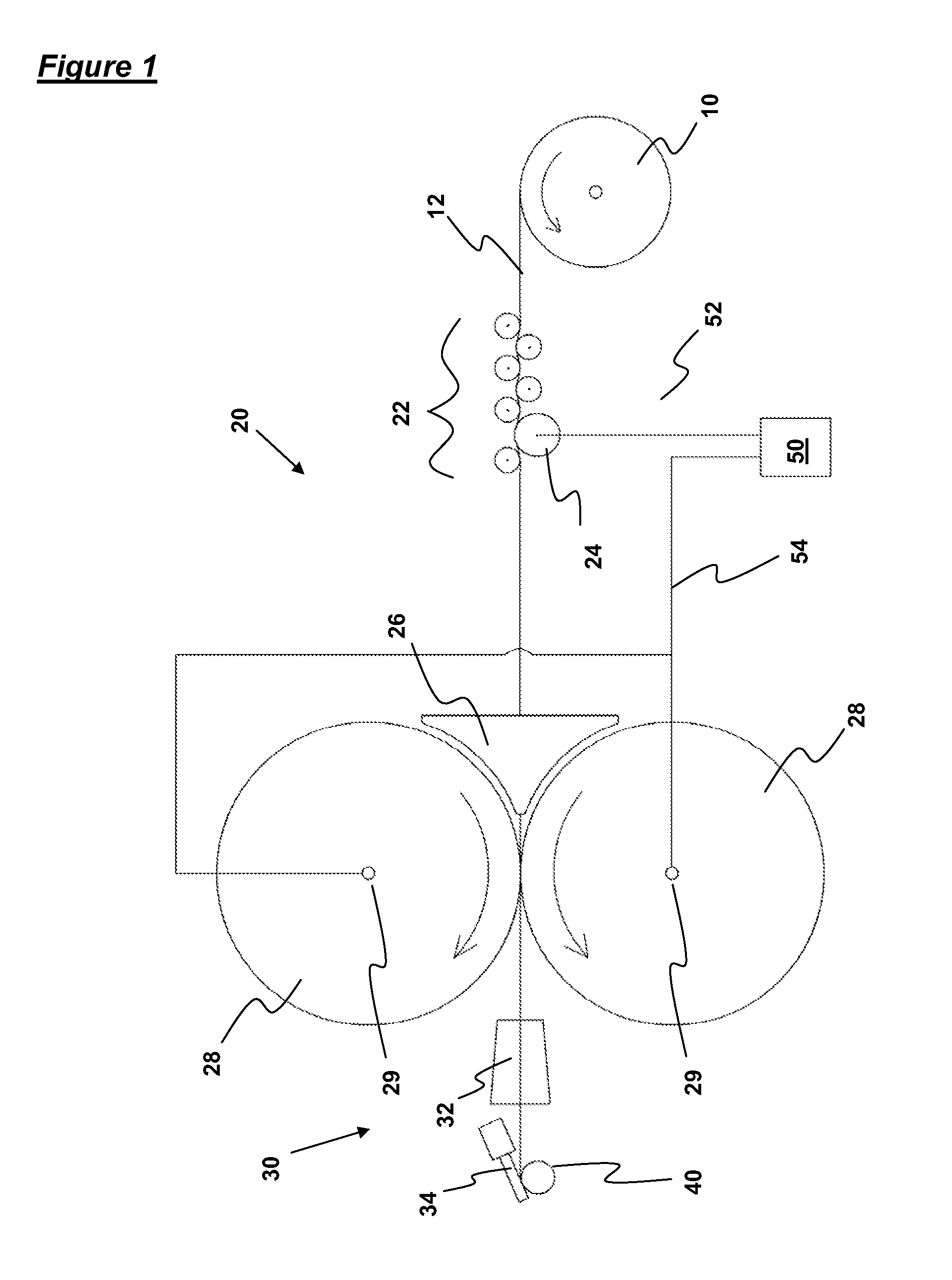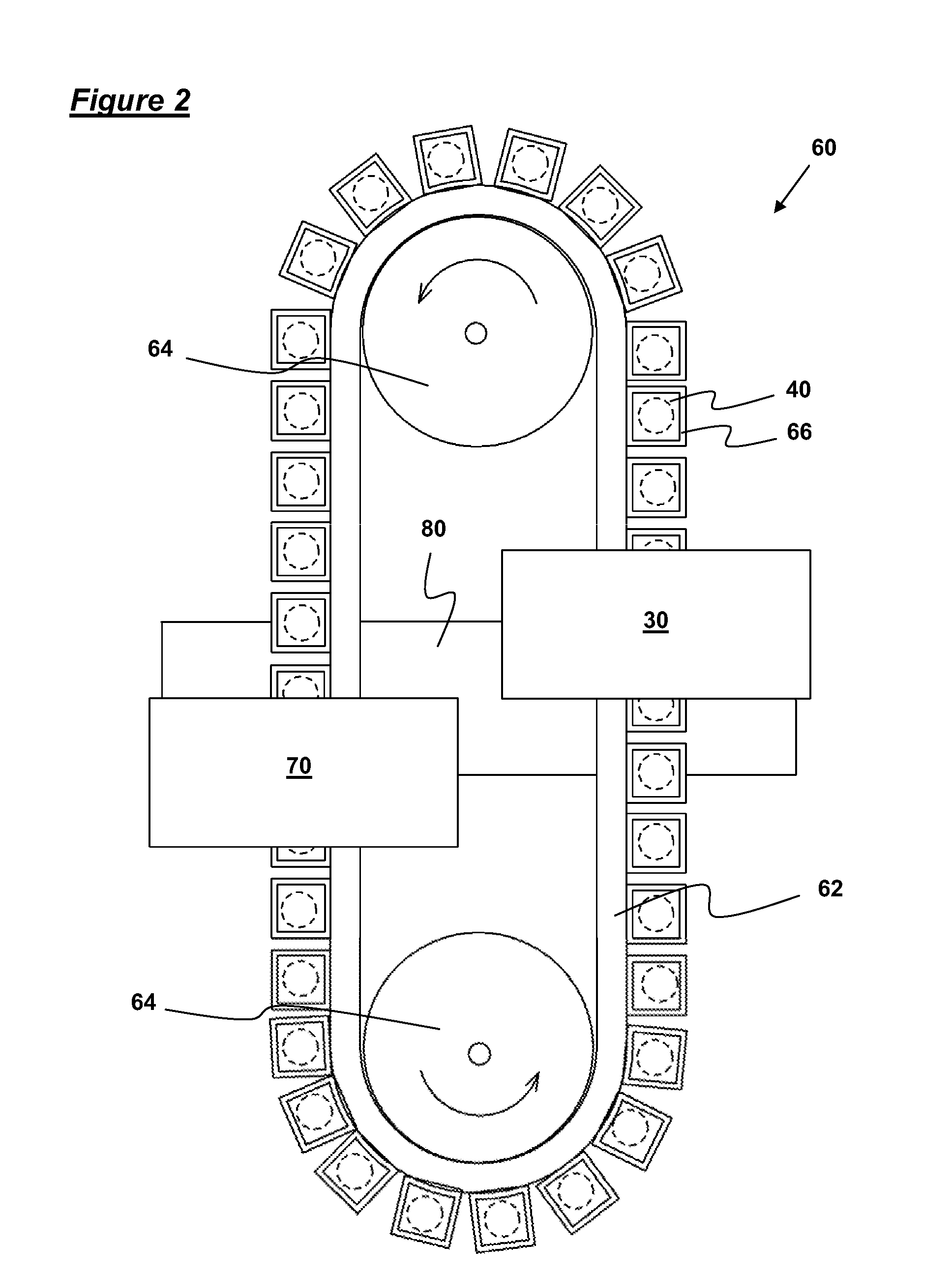Manufacture of coil springs
a technology for manufacturing apparatus and coil springs, which is applied in the field of apparatus for the manufacture of coil springs, can solve the problems of increasing the time taken to change the geometry affecting the performance so as to improve the resilience and/or the resistance to fatigue of the coil spring, reduce the arcing, and improve the properties of the coil spring
- Summary
- Abstract
- Description
- Claims
- Application Information
AI Technical Summary
Benefits of technology
Problems solved by technology
Method used
Image
Examples
first embodiment
FIG. 1 shows apparatus according to the invention comprising a feed assembly 20 and a coiling assembly 30, which are together adapted to form coil springs 40. In particular, the feed assembly 20 feeds a continuous wire 12 from a wire roll 10 to the coiling assembly 30, where the wire 12 is deformed into a coil and then severed from the remainder of the wire 12, in order to form a coil spring 40.
The wire roll 10 comprises a rotatable spool, on which is wound a continuous metal wire 12. This wire is formed of steel, having a diameter in the range of 0.5 mm to 3.0 mm. From the wire roll, the wire 12 is fed through a set of straightening rollers 22, a guide block 26 and a pair of feed rollers 28.
The straightening rollers 22 are arranged in two rows, which define a non-linear path for the wire 12 therebetween. In particular, the straightening rollers 22 are arranged in a hexagonal packed arrangement, but with sufficient separation between the rollers 22 for the wire 12 to be only slightl...
second embodiment
Nevertheless, since the conveyor mechanism 60 of the second embodiment enables two springs 40 to be delivered to the encapsulation assembly 80 substantially simultaneously, the encapsulation assembly 80 of this embodiment is adapted to encapsulate two coil springs within respective pockets, substantially simultaneously. In particular, the encapsulation assembly 80 is adapted to feed two coil springs 40 simultaneously into the space between two plies of a weldable fabric, the two plies then being sealed together (using two cross welds and a double-length end weld) to form two pockets, which each encapsulate a coil spring 40. The fabric is then indexed forward a distance equal to two pocket widths, the next two springs 40 encapsulated, and so on.
The continuous chain of pocketed coil springs is then fed into apparatus for forming strings and fastening those strings together with adhesive. Conventional apparatus may be used for this process. However, particularly suitable apparatus is d...
PUM
| Property | Measurement | Unit |
|---|---|---|
| Temperature | aaaaa | aaaaa |
| Time | aaaaa | aaaaa |
| Flow rate | aaaaa | aaaaa |
Abstract
Description
Claims
Application Information
 Login to View More
Login to View More - R&D
- Intellectual Property
- Life Sciences
- Materials
- Tech Scout
- Unparalleled Data Quality
- Higher Quality Content
- 60% Fewer Hallucinations
Browse by: Latest US Patents, China's latest patents, Technical Efficacy Thesaurus, Application Domain, Technology Topic, Popular Technical Reports.
© 2025 PatSnap. All rights reserved.Legal|Privacy policy|Modern Slavery Act Transparency Statement|Sitemap|About US| Contact US: help@patsnap.com



